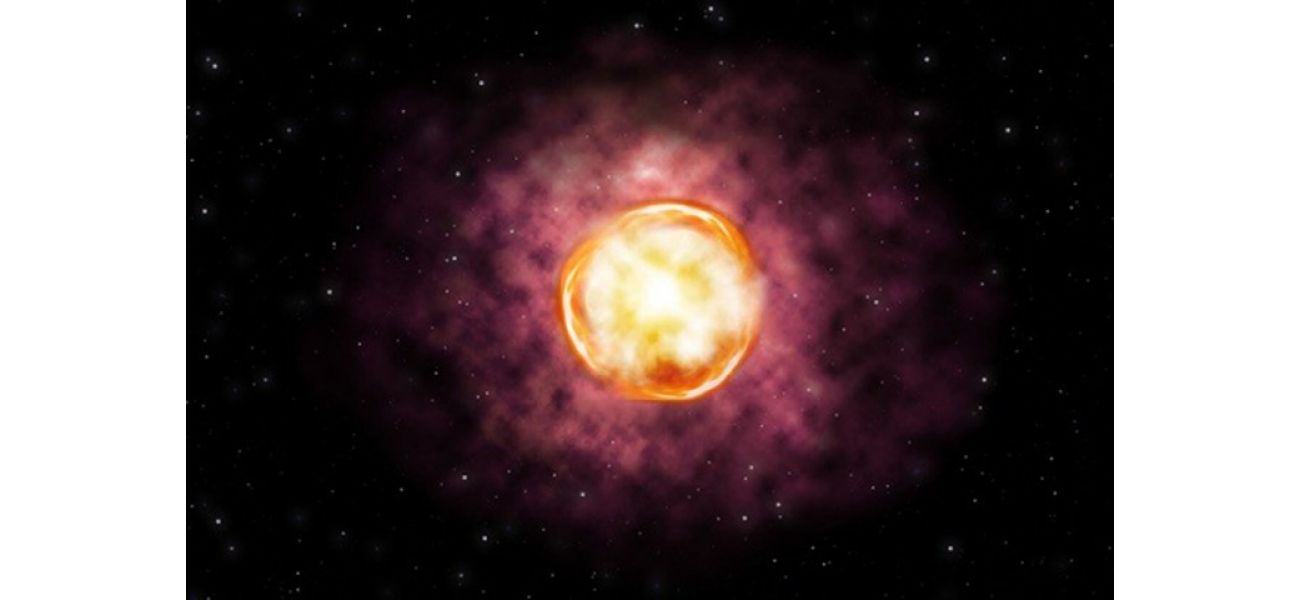Rare star caught in 'hiccuping' state by astronomers, making history.
Humans have never seen this process before.
December 18th 2024.

A team of international astronomers has recently made a groundbreaking discovery - they have spotted a giant star in its final stages before exploding. This rare event, nicknamed a "hiccuping" star, has been theorized by researchers but never actually observed until now. The star, which is between 60-150 times the size of our sun, is going through a process known as Pulsational Pair Instability (PPI), where its molten core rapidly expands and contracts before eventually exploding.
This phenomenon, which only occurs once in a blue moon, has the potential to provide major breakthroughs in our understanding of how large stars operate and their role in shaping the universe. The team, led by Dr. Charlotte Angus from the Astrophysical Research Centre at Queen's University in Belfast, has named this process PPI and has been closely monitoring the star's "hiccuping" effect.
As the star goes through this process, its shell material is ejected and strips down its core. These shells can then collide with each other, producing bursts of light. However, these collisions are much fainter than the final supernova explosion, making it difficult to confirm the theory. But in December 2020, the team identified a bright supernova, named "SN2020acct," in a nearby galaxy called NGC 2981. The light from this supernova disappeared quickly, but to the team's surprise, they saw light coming from the same region of the galaxy again in February 2021.
Dr. Angus explains that this is highly unusual, as supernovae typically do not reappear. This second appearance allowed the team to use telescopes from around the world to track the supernova and confirm that it was indeed an example of PPI. The first time it appeared, the light from the slow-moving shells of material colliding near the star could be seen. But the second time, the supernova was expanding at a much faster rate, indicating that its core had exploded, marking the end of its life.
Dr. Matt Nicholl, also from Queen's University, emphasizes that there is still much to learn about massive stars. However, confirming PPI as a real phenomenon is a significant step forward in our understanding of these incredible cosmic events. With the help of telescopes from Hawaii, Chile, South Africa, and the US, this team of astronomers has shed new light on the final stages of a giant star's life. Their findings will undoubtedly contribute to our ever-growing knowledge of the universe.
This phenomenon, which only occurs once in a blue moon, has the potential to provide major breakthroughs in our understanding of how large stars operate and their role in shaping the universe. The team, led by Dr. Charlotte Angus from the Astrophysical Research Centre at Queen's University in Belfast, has named this process PPI and has been closely monitoring the star's "hiccuping" effect.
As the star goes through this process, its shell material is ejected and strips down its core. These shells can then collide with each other, producing bursts of light. However, these collisions are much fainter than the final supernova explosion, making it difficult to confirm the theory. But in December 2020, the team identified a bright supernova, named "SN2020acct," in a nearby galaxy called NGC 2981. The light from this supernova disappeared quickly, but to the team's surprise, they saw light coming from the same region of the galaxy again in February 2021.
Dr. Angus explains that this is highly unusual, as supernovae typically do not reappear. This second appearance allowed the team to use telescopes from around the world to track the supernova and confirm that it was indeed an example of PPI. The first time it appeared, the light from the slow-moving shells of material colliding near the star could be seen. But the second time, the supernova was expanding at a much faster rate, indicating that its core had exploded, marking the end of its life.
Dr. Matt Nicholl, also from Queen's University, emphasizes that there is still much to learn about massive stars. However, confirming PPI as a real phenomenon is a significant step forward in our understanding of these incredible cosmic events. With the help of telescopes from Hawaii, Chile, South Africa, and the US, this team of astronomers has shed new light on the final stages of a giant star's life. Their findings will undoubtedly contribute to our ever-growing knowledge of the universe.
[This article has been trending online recently and has been generated with AI. Your feed is customized.]
[Generative AI is experimental.]
0
0
Submit Comment





